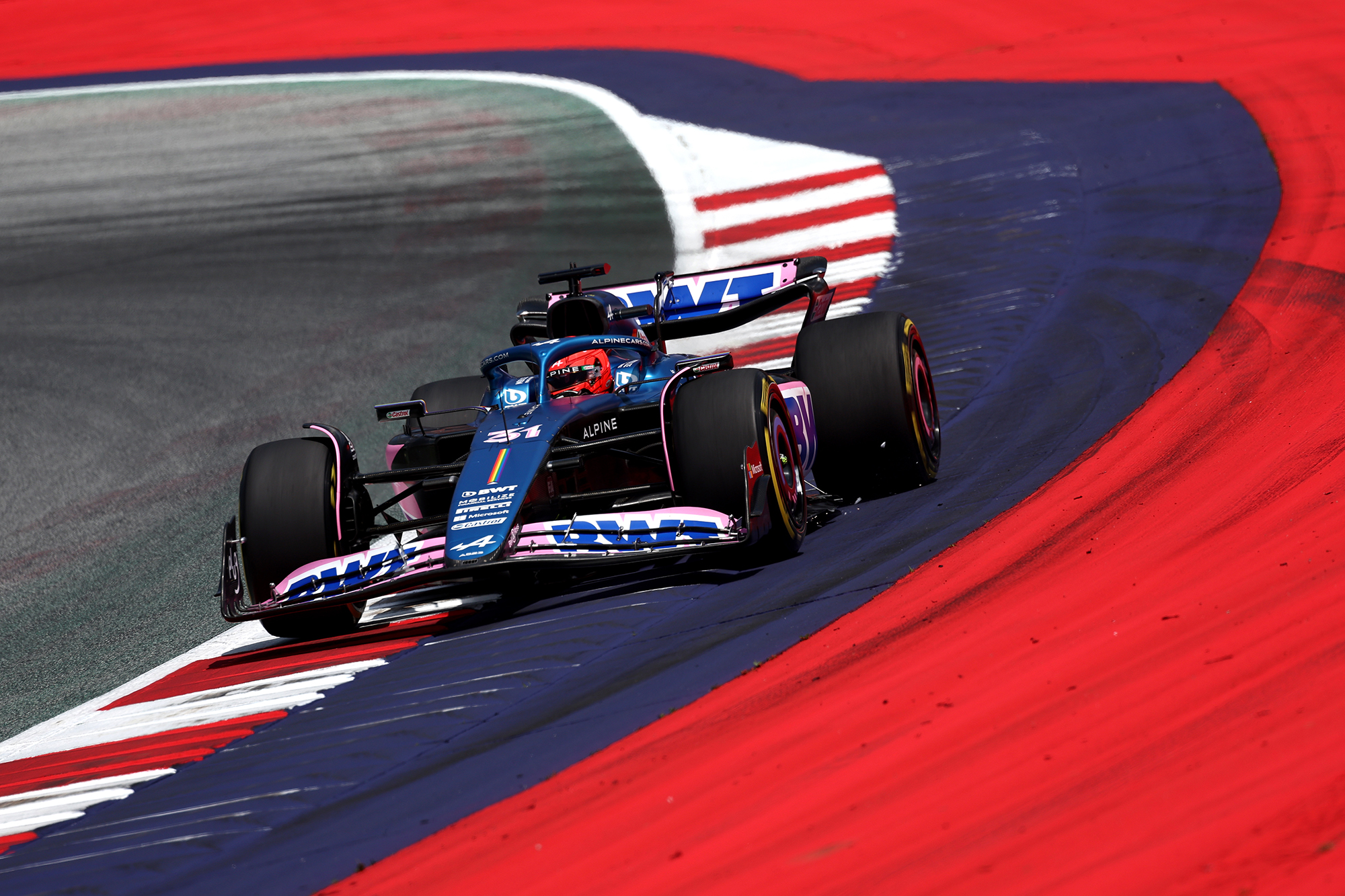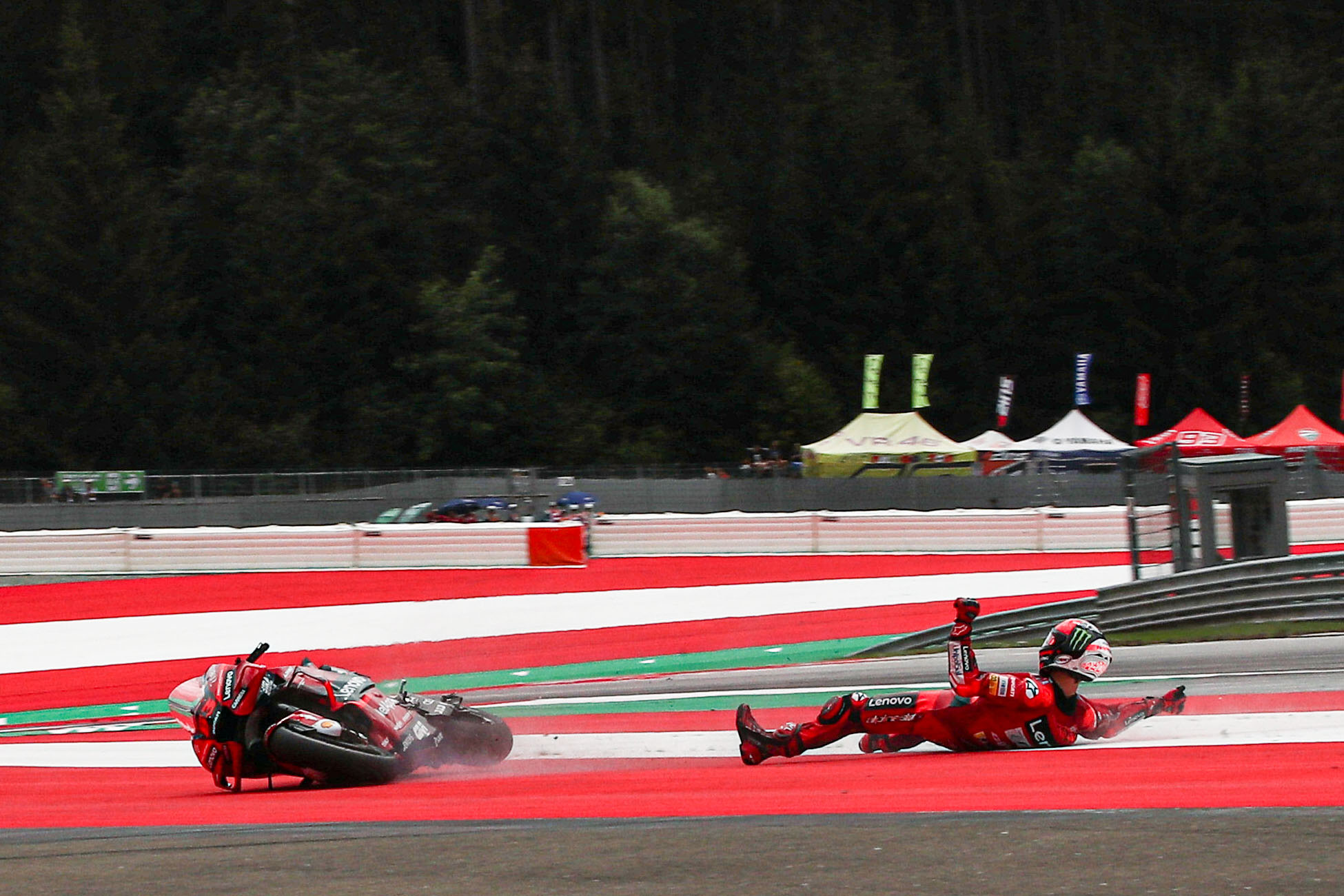Up Next

Normally of late it’s been MotoGP playing catch up with Formula 1, but F1’s Austrian Grand Prix was flipped on its head by track limits – something that’s been par for the course now for some time in the two-wheeled world.
And MotoGP got plenty of mentions as F1 debated the state it had got itself into with over 1200 potential track limits infringements to assess, with many in the four-wheeled paddock adamant that there would be gravel traps at the corners in question if it wasn’t for the Red Bull Ring also hosting MotoGP.
But it’s really not as simple as saying that bike racing wants asphalt run-off areas and car racing doesn’t.

In fact in the MotoGP paddock the understanding is that asphalt is F1’s preference because it allows drivers to continue after making mistakes without as much disruption as a gravel trap would.
It is true, though, that MotoGP’s new cottage industry of monitoring track limits comes from a fundamental and universal redesign of circuits to make them safer for bike racing in particular, and that asphalt sections of run-off on the edge of track borders are a big part of this.
Simply put, running wide on a corner that’s edged by grass or gravel is a recipe for disaster for bikes.
It’s a surefire way to cause violent crashes, ones that have a potential not just to high-side riders into the sky if it’s the rear tyre touching the grass/gravel but also to dump bikes onto the racing line and into the paths of those coming behind, creating chaos and potentially much worse.
Realising that, organisers have replaced what would have previously been naturally green areas with asphalt and green paint – a move that’s made racing safer while complicating the job of the race control tower.
The change has, undoubtedly, been for the better, reducing the number of high-speed crashes on corner exits while also restraining some of the more wild moves of the past – gone are lunges like Valentino Rossi’s dive under Casey Stoner on the inside of Laguna Seca’s infamous Corkscrew because both bikes going off is a recipe for automatic track limits penalties or order reversals.

But gravel is ultimately still the best and safest way to slow a crashing bike down. Acres of asphalt run-off may be good for cars but they actually lead to higher-speed crashes for bikes as their accidents just get faster and more destructive as they continue down the run-off. A gravel trap – of the right consistency and construction, as excessively large stones in gravel traps are another danger for bike accidents – further back in the run-off is probably the ideal for MotoGP and you can see that set-up at many Red Bull Ring corners.
Amid the chaos of F1’s Austrian GP, lots of people have been asking what the solution is, and if there’s a happy alternative that can punish drivers and riders for exceeding the track limits without causing crashes. Unfortunately, the simple answer is no.
F1 can learn from the progress MotoGP has made in managing track limits penalties, though.
They’re more common at some tracks than others, but at some they’d become a nightmare of epic proportions, with places like Misano and the Red Bull Ring leaving race control overworked and deciding the race order long after the chequered flag had dropped – though not as long as F1 needed to figure out its own Red Bull Ring order this weekend.
It became such an issue that MotoGP had to change how the whole monitoring system works. Gone is the old fashioned way of doing it by eye using TV cameras, with the series instead installing pressure sensors around the most obvious parts of the track.

Using an air hose and a pressure system that can detect when the pipe is depressed has made the process largely automated – at least for noting offences. Visual evidence is still used for penalties and close calls and allows the stewards to ensure that penalties are fairly handed out.
There’s a little more lenience with the penalties in MotoGP, too. You get three strikes before a warning, and then two more hits before a penalty applies. That’s two more chances than F1 offers.
And sanctions, when they do come, are slightly more in tune with the rather minor nature of the crime, with a trip through MotoGP’s long lap penalty loop (which normally costs about three seconds) a far better alternative than hitting someone with a time penalty post-race or incorporating a penalty into a pitstop.
On a last lap, though, it’s more strict. One count of exceeding track limits and you’re immediately hit with a penalty that demotes you one place, as long as you’re in close proximity to another rider.
That came into play not once but twice at the last round of the series at Assen, with the unfortunate Brad Binder losing out on podium finishes in both Saturday’s sprint and Sunday’s main event after cutting the green edges of the circuit in exactly the same place both times.
As there’s no perfect solution to run-off areas, it seems looking in from the outside that F1’s solution is perhaps to take some lessons from MotoGP and create a more reactive, less punishing system of sanctioning drivers for infringements, one that can be reliably decided in-play and isn’t going to descend into a late-night shambles like Sunday in Austria.





